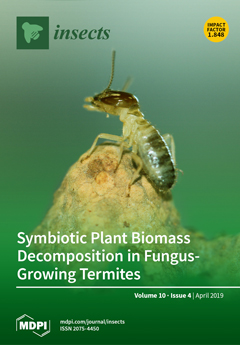Interspecific interaction with host plants have important consequences for the host race formation of herbivorous insects. Plant secondary metabolites, particularly those that are involved in host races specializing on plants, warrant the theory of host specialization.
Acyrthosiphon pisum comprises various host races that
[...] Read more.
Interspecific interaction with host plants have important consequences for the host race formation of herbivorous insects. Plant secondary metabolites, particularly those that are involved in host races specializing on plants, warrant the theory of host specialization.
Acyrthosiphon pisum comprises various host races that adapt to different Fabaceae plants, which provides an ideal system for determining the behavioral and physiological mechanisms underlying host-adaptive diversification. The current study evaluated the effects of host transfer on population fitness, feeding behavior and the transcriptome-wide gene expression of the two host races of
A. pisum, one of which was originally from
Medicago sativa and the other from
Pisum sativum. The results showed that the
Pisum host race of
A. pisum had a lower population abundance and feeding efficiency than the
Medicago host race in terms of a longer penetration time and shorter duration times of phloem ingestion when fed on
M. sativa. In contrast, few differences were found in the population abundance and feeding behavior of
A. pisum between the two host races when fed on
P. sativum. Meanwhile, of the nine candidate phenolic compounds, only genistein was significantly affected by aphid infestation; higher levels of genistein were detected in
M. sativa after feeding by the
Pisum host race, but these levels were reduced relative to uninfested controls after feeding by the
Medicago host race, which suggested that genistein may be involved in the specialization of the aphid host race on
M. sativa. Further exogenous application of genistein in artificial diets showed that the increase in genistein reduced the survival rate of the
Pisum host race but had little effect on that of the
Medicago host race. The transcriptomic profiles indicated that the transcripts of six genes with functions related to detoxification were up-regulated in the
Pisum host race relative to the
Medicago host race of
A. pisum. These results suggested that the inducible plant phenolics and associated metabolic process in aphids resulted in their differential adaptations to their Fabaceae host.
Full article






